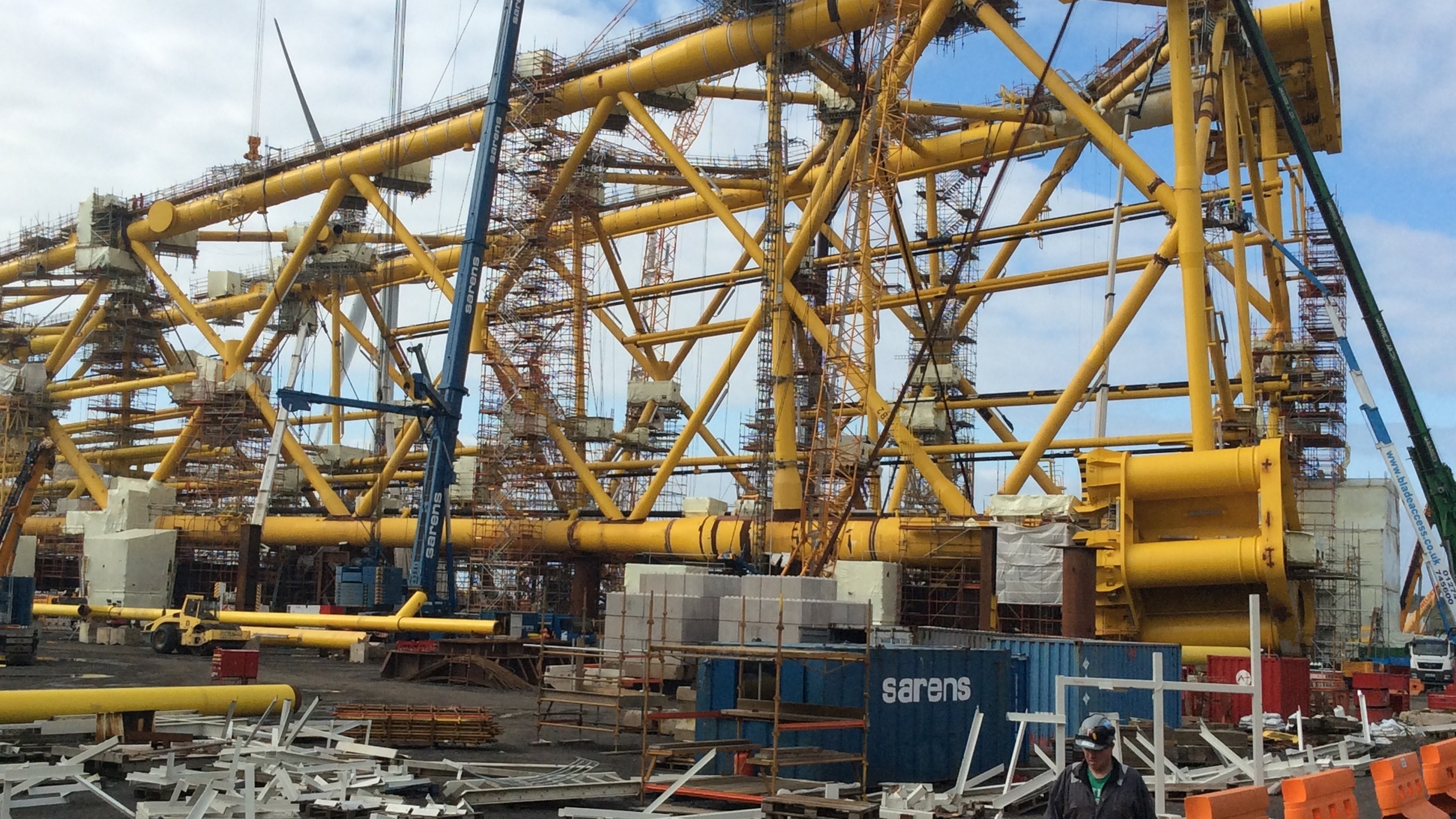The dispute over the mooted BiFab closure is a microcosm of Scotland’s economy.
Thursday morning tourists filing through Edinburgh’s Medieval old town on the way to view its castle, a fortress that played a key role in wars during the ages of Robert the Bruce and Oliver Cromwell, were this week bemused to find themselves amid a far more modern conflict. Miles from a site of industrial production, hundreds of men and women had gathered in orange boiler suits. They carried flags and placards. Banners emblazoned with ‘The Battle for BiFab’ gave the more observant viewer an indication of their concern.
The vast majority of those assembled had travelled on a fleet of union buses from Fife, north of Scotland’s capital. Their mustering was a demonstration of their resolve to keep the Burntisland Fabrication (BiFab) yard open. After hearing that their employer was in financial trouble and intended to close the workplace, the workers occupied the yard earlier this week. This is no ordinary industrial dispute. Rather than a strike or a sit-in it has been profiled as a ‘work-in’, modelled on events at Upper Clyde Shipbuilders during 1971-2. The workforce is exercising its power by continuing production under their control and have mounted barricades to prevent management from removing partially completed production or assets.
BiFab should be at the centre of any vision for a Scotland with an industrial future. As well as providing major contracts for the North Sea oil and gas sectors the yard is also a major supplier to renewables sectors including both tidal platforms and offshore windfarms. The firm’s present difficulties relate to a major contract with the Dutch multinational Seaway Heavy Lifting who are overseeing the construction of a major windfarm project in the Moray Firth in collaboration with Scottish and Southern Energy (SSE).
In this dispute we see a lot of Scotland’s economy in microcosm. As well as the power of multinationals to dictate terms to smaller businesses, workforces and communities, the BiFab workers are also contending with a large utilities business created by the privatisation of public assets but who owe their loyalty to “shareholder value” rather than sustainable economic development. Gary Smith, Scottish Secretary of the GMB, drew attention to an important element of the dispute by commending the BiFab workers for standing up to “a Dutch multinational and a huge energy conglomerate” at the rally which followed the demonstration outside the Scottish Parliament building at Holyrood. However, the realities of the threat these powers pose to democracy was also confirmed. Keith Brown, the Scottish Government’s Secretary for Economy, Jobs and Fair Work warned those gathered that whilst the administration was endeavouring to a “long-term future beyond the contract”, “some elements of commercial confidentiality” would prevent full disclosure of discussions with the businesses involved.
The demonstration, which preceded First Minister’s Questions, clearly focused political minds. MSPs from all parties came to greet the workers following the rally and BiFab also dominated proceedings in the chamber. Nicola Sturgeon has also returned early from the Climate Summit in Bonn to pursue urgent negotiations over the future of a site which is central to a green Scotland. This is a testament to the resolve and creativity of the BiFab workers. Their work-in has made the future of the firm a major subject of debate.
The march was fronted by apprentice workers and the GMB has also released a film in which the men and women who work at the Fife yard tell their stories of employment and feelings about closure. At the rally, Hazel Nolan, a GMB officer who has been instrumental in the dispute, emphasised the “human stories” of workers who are much more than mere numbers to be counted in employment or on dole queues. This message was hammered home by the significant employment of disabled people at the yard, and by the presence of three generations of one family on the demonstration: a grandfather, father and young son with a placard reading ‘save daddy’s work’.
At present it remains to be seen how the dispute will eventually be resolved. The Scottish Government has a recent track record of using industrial policy to make emergency bailouts in order to maintain production in steel and shipbuilding. An outcome along these lines would fulfil the immediate demand of John Gillespie, a Unite construction activist, that the Scottish Parliament act “to sort this mess out now”. However, it falls short of the demand Michael Sullivan, GMB’s convenor at BiFab, articulated at the rally - namely, that the government “take over the yard”. This dispute unusually publicly raises the questions of control and power over industry, and presents an alternative in the form of worker involvement in running workplaces. Coinciding with Richard Leonard’s bid for the Scottish Labour leadership - unashamedly arguing for extending public control over the economy through nationalisation but also supporting cooperatives and extending collective bargaining - BiFab makes the case for a more developed labour movement economic alternative clear.
In the here and now, the words of Unite’s Scottish Secretary, Pat Rafferty to the BiFab workers at Thursday’s rally ring truest: “It’s your actions today that are keeping these yards open.” Scottish history wasn’t just shaped in its capital’s castle or parliament, but in its workplaces and communities across its towns and countryside. Its present will equally be shaped in the fabrication yards of windfarms of the Highlands. The BiFab occupation is an inspiring example of workers taking initative into their own hands and it has also demonstrated the continuing capacity of trade unions to set the political agenda.
